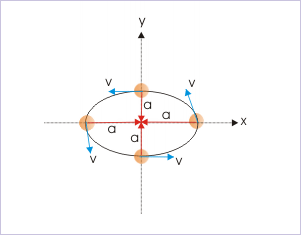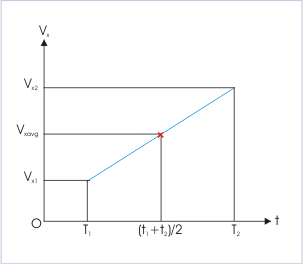| << Chapter < Page | Chapter >> Page > |
Uniform circular motion

Notwithstanding the constant magnitude, acceleration of uniform circular motion is a variable acceleration in the horizontal plane, because direction of radial centripetal acceleration (shown with red arrow) keeps changing with time. Therefore, the acceleration of the motion keeps changing and is not independent of time as required for acceleration to be constant.
The motion under constant acceleration allows us to describe accelerated motion, using simple mathematical construct. Here, we set out to arrive at these relationships in the form of equations. In these equations, “ u ” stands for initial velocity, “ v ” for final velocity, “ a ” for constant acceleration and “t” for time interval of motion under consideration. This is short of convention followed by many text books and hence the convention has been retained here.
This relation can be established in many ways. One of the fundamental ways is to think that velocity is changed by constant acceleration (vector) at the end of successive seconds. Following this logic, the velocity at the end of t successive seconds are as under :
We can also derive this equation, using the defining concept of constant acceleration. We know that :
Alternatively (using calculus), we know that :
Integrating on both sides, we have :
The equation is a linear relationship. Hence, average velocity is arithmatic mean of initial and final velocities :
Average velocity

This equation is derived by combining the two expressions available for the average velocity.
and
Combining two expressions of average acceleration and rearranging, we have :
Using the relation, and substituting for v, we have :
Alternatively, we can derive this equation using calculus. Here,
Integrating between the limits on both sides,
Now substituting v ,
The expression for the displacement has two terms : one varies linearly ( u t) with the time and the other ( ) varies with the square of time. The first term is equal to the displacement due to non-accelerated motion i.e the displacement when the particle moves with uniform velocity, u . The second term represents the contribution of the acceleration (change in velocity) towards displacement.
This equation is used for determining either displacement(Δ r ) or position( ). A common simplification, used widely, is to consider beginning of motion as the origin of coordinate system so that

Notification Switch
Would you like to follow the 'Physics for k-12' conversation and receive update notifications?